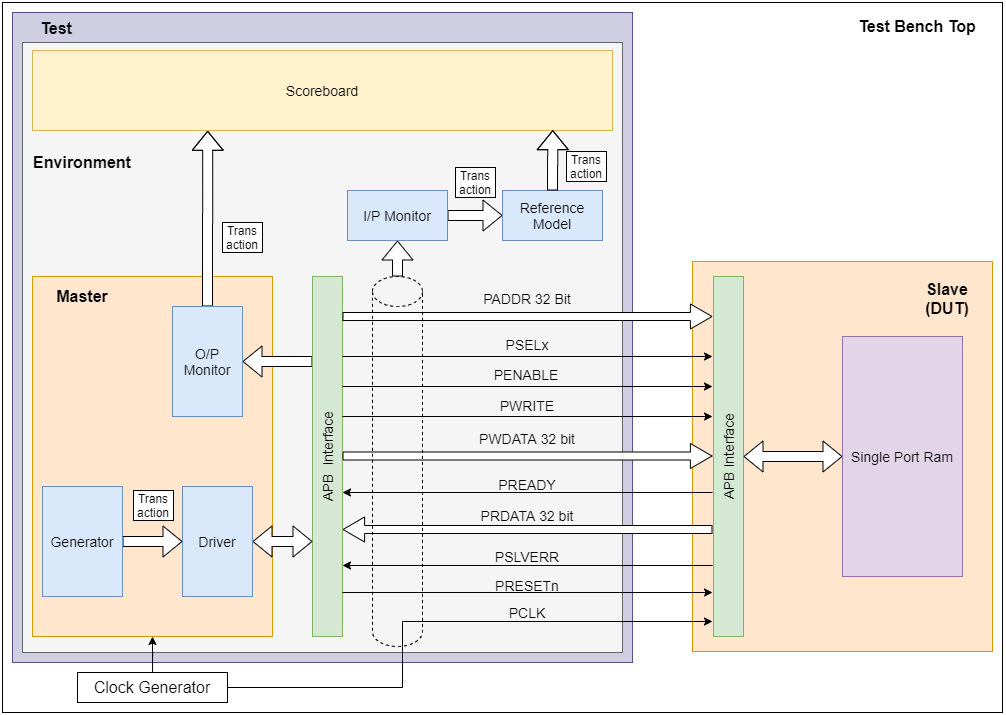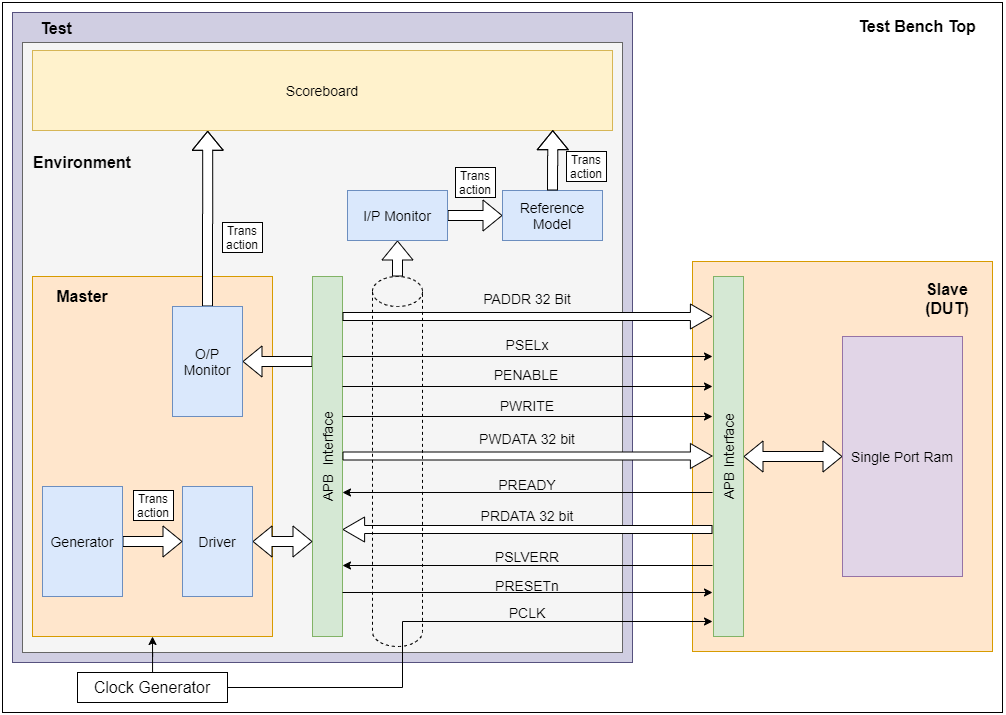How to run test bench
- Download the latest release from below or visit the release page for more releases.
SV Testbench UVM Testbench Zip Zip Tar.gz Tar.gz
- Copy the contents in a folder.
- Compile tb_top.sv in any simulator and simulate top module.
SV Testbench
Architecture

Components
Transaction
Signals encapsulated in transaction class is shown below:
class transaction;
// Input
rand bit PWRITE;
rand bit[31:0] PWDATA [];
rand bit[31:0] PADDR [];
rand bit PRESETn;
bit PSEL1;
bit PENABLE;
// Output
bit PREADY;
bit [31:0] PRDATA [int];
bit PSLVERR;
endclass
Transaction class also encapsulates helper function like printf(string message), compare(transaction trans), etc.
Generator
Generates new packet which is sent to the driver. Main functionality is to randomize transaction class.
task run();
assert(trans.randomize());
endtask
Driver
Drives the packet according to the APB protocol. The drive seqeunce is as follows:

Input Monitor
Monitors the input signals of the APB protocol and when a complete transaction is monitored, it sends the sampled packet to reference model, which generates the expected value.
Output Monitor
Monitors the output signals of the APB protocol and after complete transaction is monitored it sends the packet to scoreboard for checking.
Reference Model
Generates the reference output/value, which is compared with the actual output received from the DUT
Scoreboard
Compares the actual packet and the reference packet and generates report for all the test cases.
UVM Testbench
Architecture

This project is governed by MIT License